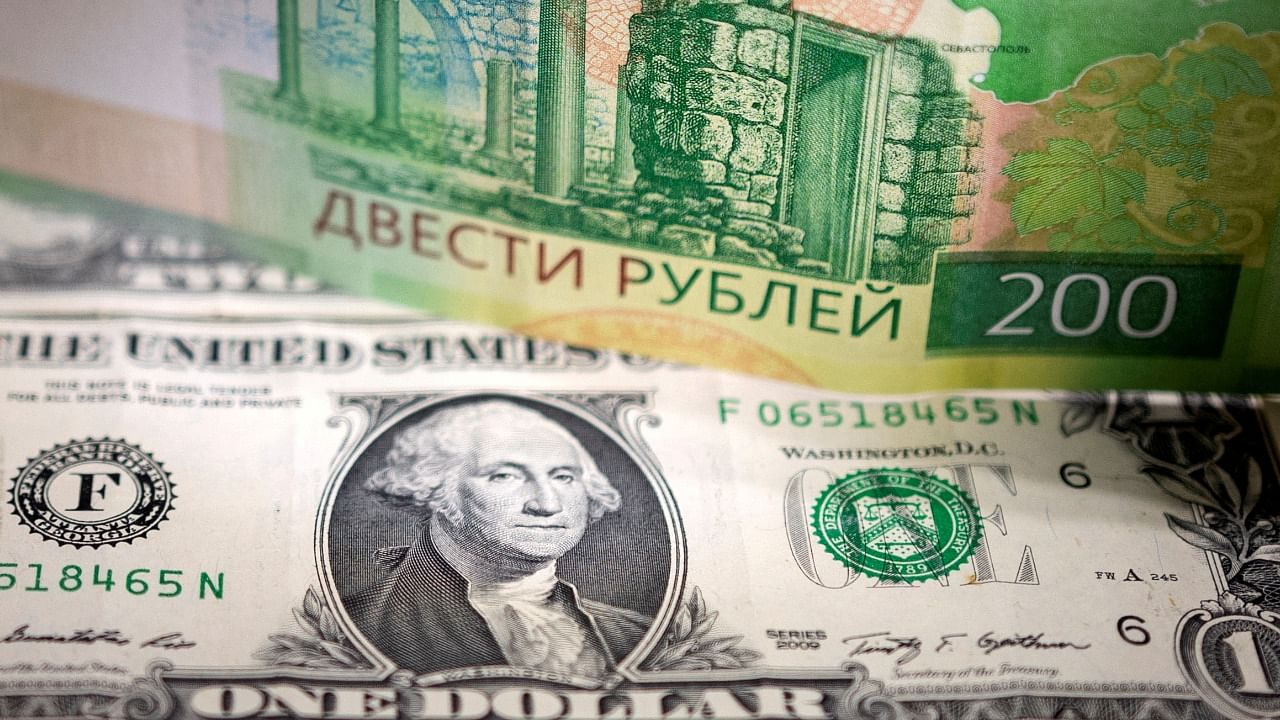
The rouble stabilised somewhat on Tuesday after its crash to an all-time low, while the safe-haven yen and Swiss franc were steady after their biggest rallies in almost seven weeks with traders focused squarely on the developing crisis in Ukraine.
A modicum of calm returned to currency markets after officials from Russia and Ukraine held an initial round of ceasefire talks, four days after Russia invaded its neighbour, with the euro back at around $1.12 after tumbling as low as $1.11210 at one point on Monday.
The risk-sensitive Australian dollar traded at a nearly one-week high, rebounding from losses as steep as 1.2% in the previous session. The Reserve Bank of Australia sets monetary policy later on Tuesday, and is widely expected to hold the key rate at a record low.
Leading cryptocurrency bitcoin held close to a nearly two-week high above $44,000 reached late overnight.
The rouble started the week in dramatic circumstance, plunging as much as 30% to a record 120 per dollar after Western countries and their allies slapped Russia with new sanctions including cutting off some banks from the SWIFT financial network. The currency recovered somewhat after an emergency rate hike and other urgent measures adopted by the Russian central bank, and last traded at 102.
The yen eased slightly to 115.07 per dollar after registering a 0.48% gain on Monday. Fellow haven currency the Swiss franc edged lower to 0.91775 per dollar after a 0.95% rally overnight.
Currency volatility was at its highest in 14 months on Monday, as measured by a Deutsche Bank index.
"News from Ukraine remain bleak, with Russia-Ukraine talks yielding no resolution," Rodrigo Catril, senior foreign-exchange strategist at National Australia Bank, wrote in a note.
"Fighting rages on as the West looks to increase efforts to isolate Russia."
The instability will keep safe-haven currencies bid and euro under pressure, while the Aussie has so far held up due to higher commodity prices and Australia's geographic distance from the conflict, Catril said.
The dollar index, which measures the greenback against six major rivals, was stuck at around 96.75, after paring gains of as much as 0.89% on Monday to end the session 0.18% higher.
Weighing on the currency was a retreat in U.S. benchmark 10-year yields to an almost one-month low overnight as investors sought the safety of Treasuries, even with the Federal Reserve seen certain to raise interest rates at its policy meeting next month.
However, the Ukraine crisis has spurred traders to pare bets for a 50 basis-point rate hike on March 16 to just 8.5%, according to CME's Fedwatch tool.
Atlanta Fed President Raphael Bostic said on Monday that he's not ruling out a half point move, in the first comments by a Fed official since the conflict.
"The bottom line: do not write off a 50bp increase," Commonwealth Bank of Australia strategist Joseph Capurso wrote in a client note, saying market pricing had gotten too low.
"The near-term trends in the USD will be dominated by the war, but the medium-term trends in the USD will be determined by the economic data."
Check out DH's latest videos: